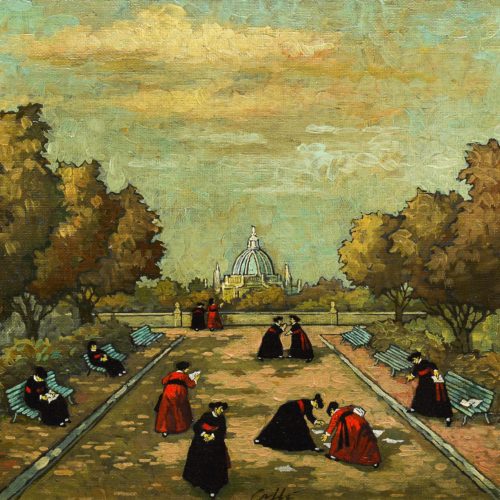-
Out of stock
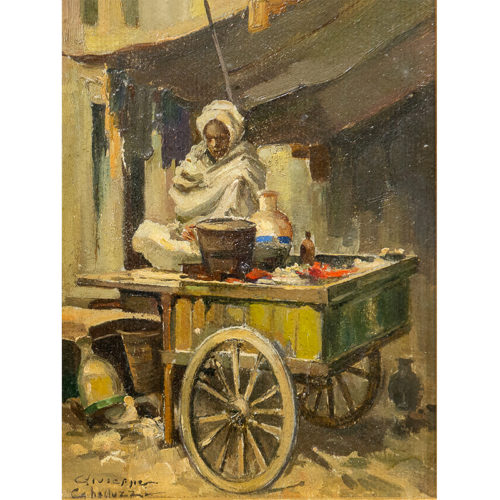 Small painting signed on the lower left by Giuseppe Gheduzzi (Bologna 1889 - Turin 1957). In excellent condition. With Frame. Period: Early 1900s Measurements: Frame H 39.5 x L 34.5 cm / Table H 22 x L 17 cm
Small painting signed on the lower left by Giuseppe Gheduzzi (Bologna 1889 - Turin 1957). In excellent condition. With Frame. Period: Early 1900s Measurements: Frame H 39.5 x L 34.5 cm / Table H 22 x L 17 cm -
Out of stock
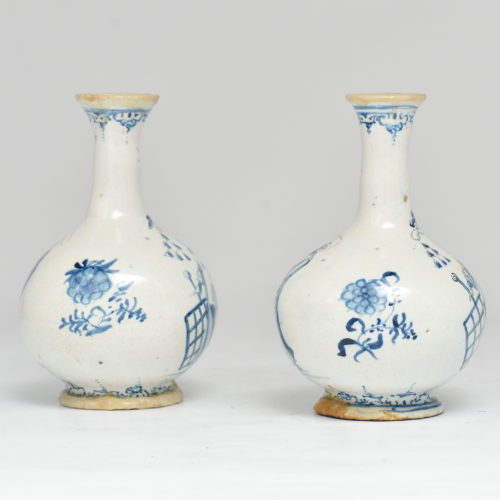 Pair of ointment containers, Savona, in good condition, dating back to the 18th century. In 1641 the Genoese Senate granted to the Grosso factory in Albisola the privilege of marking the ceramics with the symbol of the lighthouse of Genoa, the lantern. Between the end of the seventeenth and the beginning of the eighteenth century, again with the permission of the Genoese Senate, the lantern became the symbol of the Chiodo-Peirano, society of Savona. The Chiodos, after 1738, who remained the sole owners of the factory, continued to mark their ceramics with the lantern until 1782, the year of the transfer of the factory to the company Pittamiglio-Astengo-Carlevarino, which in turn gave up the business in 1786. Epoca: '700 Measurements: H 18 x Ø 12 cm
Pair of ointment containers, Savona, in good condition, dating back to the 18th century. In 1641 the Genoese Senate granted to the Grosso factory in Albisola the privilege of marking the ceramics with the symbol of the lighthouse of Genoa, the lantern. Between the end of the seventeenth and the beginning of the eighteenth century, again with the permission of the Genoese Senate, the lantern became the symbol of the Chiodo-Peirano, society of Savona. The Chiodos, after 1738, who remained the sole owners of the factory, continued to mark their ceramics with the lantern until 1782, the year of the transfer of the factory to the company Pittamiglio-Astengo-Carlevarino, which in turn gave up the business in 1786. Epoca: '700 Measurements: H 18 x Ø 12 cm -
Out of stock
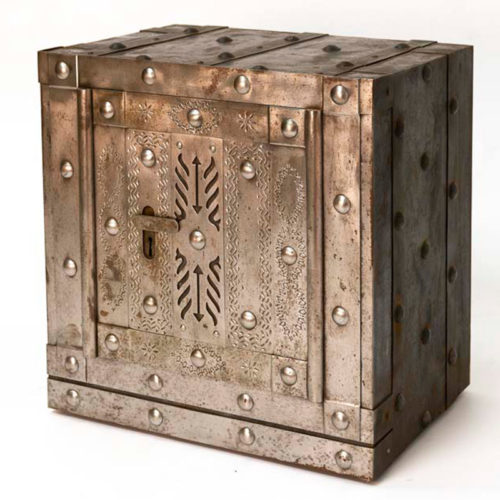 Small safe with studs, working key. Inside equipped with two drawers. Very good condition. Period: Half 1800s Measurements: H 40 x L 40 x P 27 cm
Small safe with studs, working key. Inside equipped with two drawers. Very good condition. Period: Half 1800s Measurements: H 40 x L 40 x P 27 cm -
Out of stock
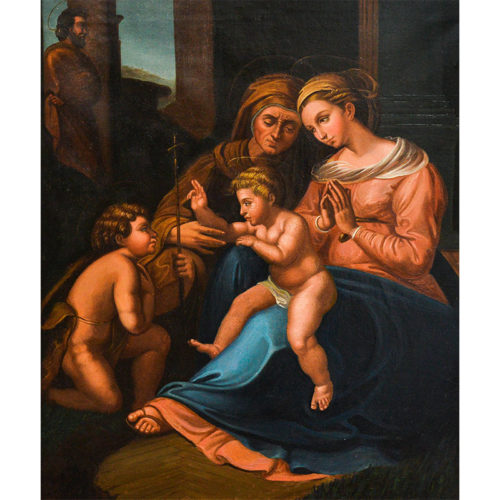 Epoca: '800 Measurements: In frame H 90 x L 78,5 / Canvas H 78,5 x 65 cm"Madonna del divinatore" oil on canvas by Raphael, reproduction of the 19th century. The original is kept in the Capodimonte museum. Restored
Epoca: '800 Measurements: In frame H 90 x L 78,5 / Canvas H 78,5 x 65 cm"Madonna del divinatore" oil on canvas by Raphael, reproduction of the 19th century. The original is kept in the Capodimonte museum. Restored -
Out of stock
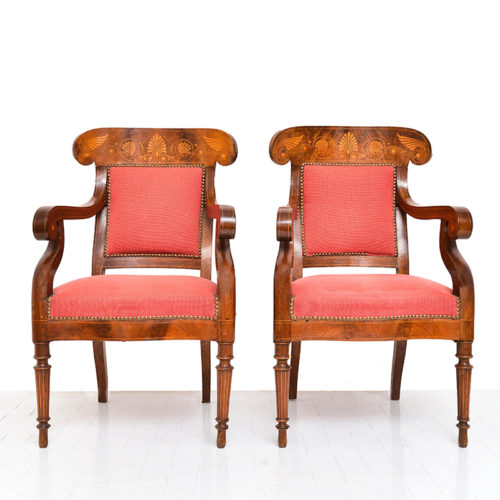 Period: around 1840 Measurements: H 100 x L 57 x P 56 x H seat 45 cmPair of Charles X armchairs, in walnut, inlaid in boxwood, dating back to the 1840s, red fabric in good condition, to be re-upholstered.
Period: around 1840 Measurements: H 100 x L 57 x P 56 x H seat 45 cmPair of Charles X armchairs, in walnut, inlaid in boxwood, dating back to the 1840s, red fabric in good condition, to be re-upholstered. -
Out of stock
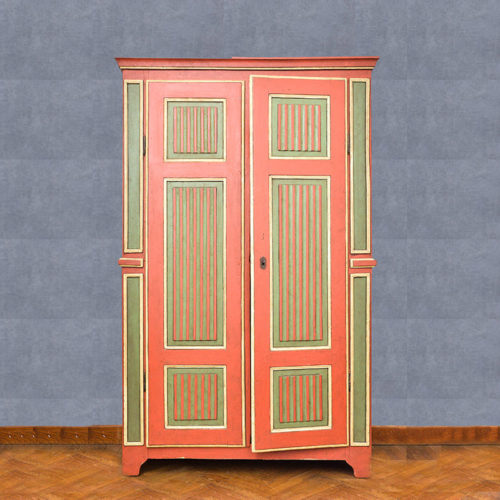 Piedmontese wardrobe, pickled, in shades of red and green, three-panel doors, dating back to around 1830Period: around 1830 Measurements: H 209 x L 127 x P 49 cm
Piedmontese wardrobe, pickled, in shades of red and green, three-panel doors, dating back to around 1830Period: around 1830 Measurements: H 209 x L 127 x P 49 cm -
Out of stock
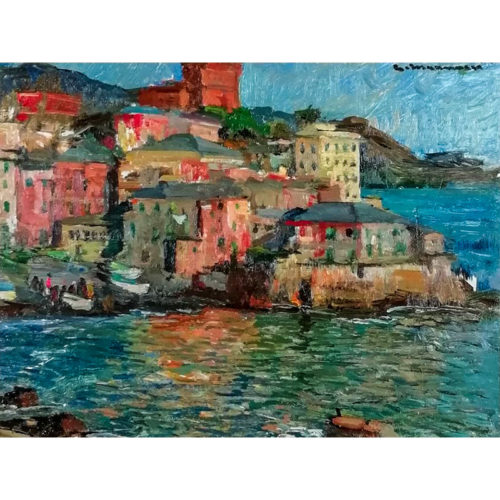 Dipinto olio su tavola di Cipriano Mannucci (Nizza 1882 - Firenze 1970). Compì gli studi a Firenze alla scuola d'Arte di S. Croce. Nel 1908 vinse un premio in una mostra alla Societa' Fiorentina di Belle Arti. Visse alcuni anni a Parigi, esponendovi più volte; partecipò a mostre in Italia e in America Meridionale, ottenendo numerosi riconoscimenti. Il dipinto è una veduta di Boccadasse (GE), è firmato dall'autore nell'angolo in alto a destra. Period: 1930/40 Measurements: In frame H 50 x L 60 cm / Table H 30 x L 40 cm
Dipinto olio su tavola di Cipriano Mannucci (Nizza 1882 - Firenze 1970). Compì gli studi a Firenze alla scuola d'Arte di S. Croce. Nel 1908 vinse un premio in una mostra alla Societa' Fiorentina di Belle Arti. Visse alcuni anni a Parigi, esponendovi più volte; partecipò a mostre in Italia e in America Meridionale, ottenendo numerosi riconoscimenti. Il dipinto è una veduta di Boccadasse (GE), è firmato dall'autore nell'angolo in alto a destra. Period: 1930/40 Measurements: In frame H 50 x L 60 cm / Table H 30 x L 40 cm -
Out of stock
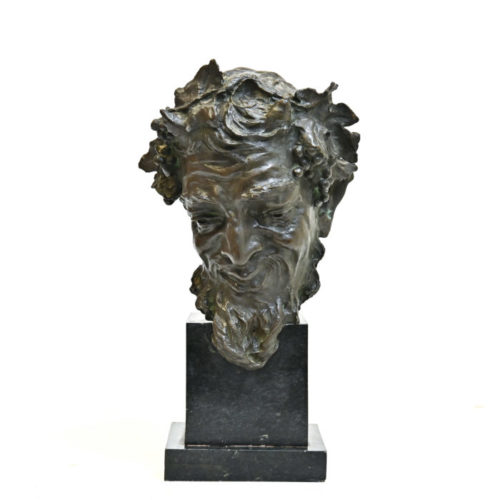 "Head of Satyr" - Bronze sculpture by Vincenzo Gemito (Naples, 16 July 1852 - Naples, 1 March 1929), Italian sculptor, designer and goldsmith. In Naples he was known as "’ o crazy sculptor " because he was tormented and marked by profound psychic imbalances; in reality his name was Vincenzo Gemito (Naples 1852 - 1929), a goldsmith and sculptor who, due to his condition, was often forced to take long breaks from his creative activity. His life was not simple right from the start: he was abandoned to his fate by his parents after being deposited in the wheel of exposures of the Annunziata plant. In fact, his real surname was Genito - "generated" - usually associated with orphans, but due to a mistake by a scribe the N became an M. Adopted and raised in a very poor family, from an early age Gemito proved to be gifted with immense talent for the plastic arts. His watchful eye loved to dwell above all on the scenes of the Neapolitan slums and his favorite subjects were children dressed in rags, commoners and players. The Gallerie d’Italia in Naples houses one of the most important nucleus of the artist's works, coming from the collection of the lawyer Gabriele Consolazio: terracotta, bronzes and drawings produced between the 1870s and the 1920s of the following century. The young heads modeled in terracotta - such as the impressive "Scugnizzo", "Fiociniere" and "Moretto" - testify to his tendency towards naturalism. Much more sophisticated are the bronze portraits of famous people, such as that of the Spanish painter Mariano Fortuny and his contemporary Domenico Morelli. His tireless plastic research is represented in particular by the "Philosopher's head" and the later "Neapolitan girl's bust", characterized by a sensual classicism that recalls the seductions and virtuosity of ancient Hellenistic sculpture. The drawings made with different materials and procedures are no less splendid: Gemito, in fact, knew how to master pencil, charcoal, ink, watercolor, sanguine and white tempera with the same skill. The engaging self-portraits are exhibited at Palazzo Zevallos Stigliano, merciless evidence of the painful changes in his physiognomy over the years; another important series on display consists of the figures of women where it is possible to observe the style research inspired by seventeenth-century models that made Vincenzo Gemito the last follower of Neapolitan naturalism.Period: '900 Measurements: H 42 x W 23 x D 23 cm
"Head of Satyr" - Bronze sculpture by Vincenzo Gemito (Naples, 16 July 1852 - Naples, 1 March 1929), Italian sculptor, designer and goldsmith. In Naples he was known as "’ o crazy sculptor " because he was tormented and marked by profound psychic imbalances; in reality his name was Vincenzo Gemito (Naples 1852 - 1929), a goldsmith and sculptor who, due to his condition, was often forced to take long breaks from his creative activity. His life was not simple right from the start: he was abandoned to his fate by his parents after being deposited in the wheel of exposures of the Annunziata plant. In fact, his real surname was Genito - "generated" - usually associated with orphans, but due to a mistake by a scribe the N became an M. Adopted and raised in a very poor family, from an early age Gemito proved to be gifted with immense talent for the plastic arts. His watchful eye loved to dwell above all on the scenes of the Neapolitan slums and his favorite subjects were children dressed in rags, commoners and players. The Gallerie d’Italia in Naples houses one of the most important nucleus of the artist's works, coming from the collection of the lawyer Gabriele Consolazio: terracotta, bronzes and drawings produced between the 1870s and the 1920s of the following century. The young heads modeled in terracotta - such as the impressive "Scugnizzo", "Fiociniere" and "Moretto" - testify to his tendency towards naturalism. Much more sophisticated are the bronze portraits of famous people, such as that of the Spanish painter Mariano Fortuny and his contemporary Domenico Morelli. His tireless plastic research is represented in particular by the "Philosopher's head" and the later "Neapolitan girl's bust", characterized by a sensual classicism that recalls the seductions and virtuosity of ancient Hellenistic sculpture. The drawings made with different materials and procedures are no less splendid: Gemito, in fact, knew how to master pencil, charcoal, ink, watercolor, sanguine and white tempera with the same skill. The engaging self-portraits are exhibited at Palazzo Zevallos Stigliano, merciless evidence of the painful changes in his physiognomy over the years; another important series on display consists of the figures of women where it is possible to observe the style research inspired by seventeenth-century models that made Vincenzo Gemito the last follower of Neapolitan naturalism.Period: '900 Measurements: H 42 x W 23 x D 23 cm -
Out of stock
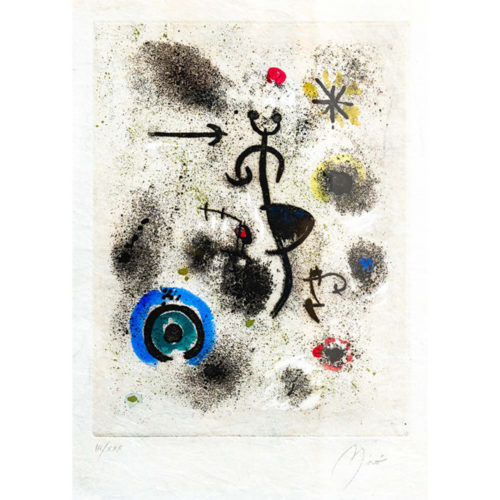 Original lithograph (III / XXX) by Joan Mirò (1893-1983). Edition of 30 copies, Roman numerals, this is 3rd out of 30. Signed on the lower right. Period: Twentieth century Measurements: Print H 38.5 x L 29.5 / Paper H 66 x L 50 cm
Original lithograph (III / XXX) by Joan Mirò (1893-1983). Edition of 30 copies, Roman numerals, this is 3rd out of 30. Signed on the lower right. Period: Twentieth century Measurements: Print H 38.5 x L 29.5 / Paper H 66 x L 50 cm -
Out of stock
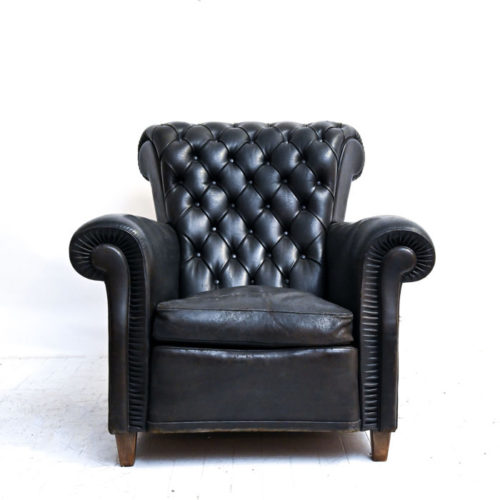 Antique original Poltrona Frau from the early 1900s, in good condition. Period: Early 20th century Measurements: H 90 x W 80 x D 105.5 cm
Antique original Poltrona Frau from the early 1900s, in good condition. Period: Early 20th century Measurements: H 90 x W 80 x D 105.5 cm
